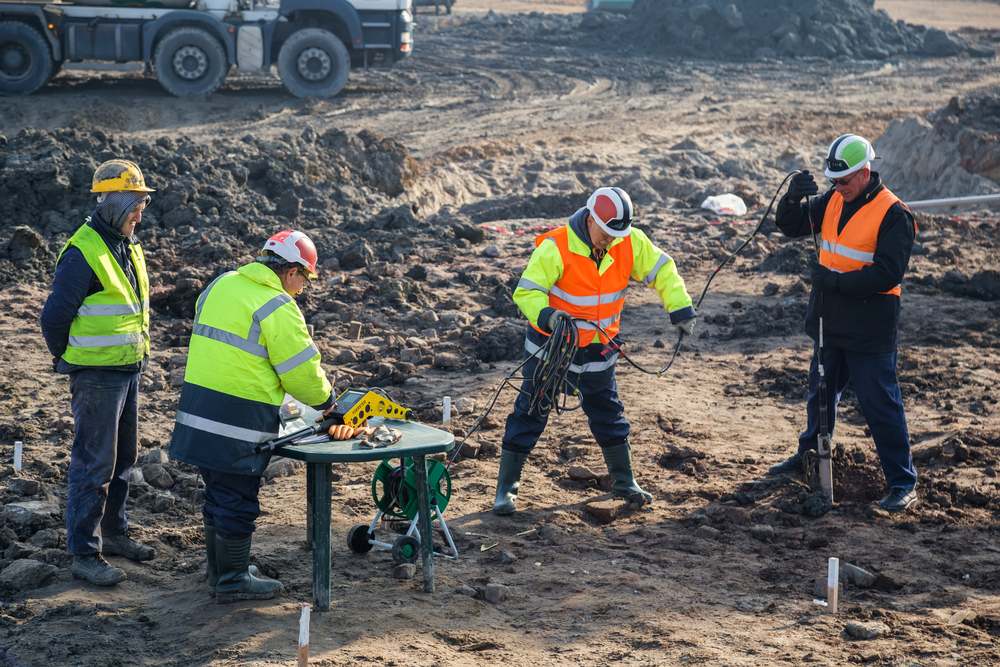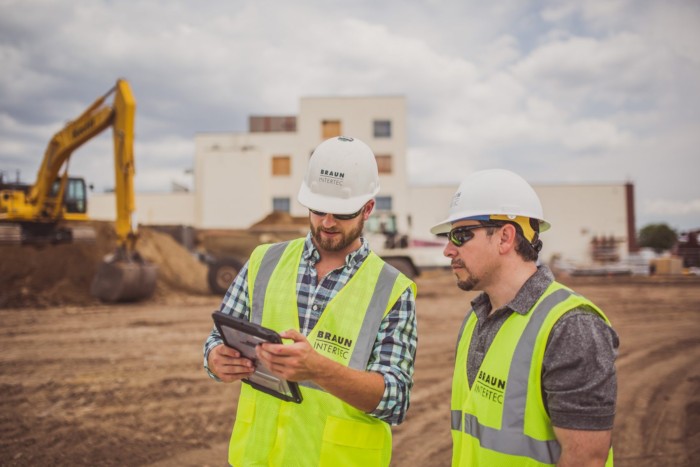How a Tailings Engineer Can Maximize Waste Administration for Mining Workflow
How a Tailings Engineer Can Maximize Waste Administration for Mining Workflow
Blog Article
Checking Out the Cutting-edge Techniques and Technologies Forming the Future of the Geotechnical Industry for Lasting Design Solutions
The geotechnical industry is undertaking a transformative shift, driven by ingenious strategies and technologies that highlight lasting design remedies. Advanced dirt stabilization methods, the use of clever products, and the application of information analytics are redefining exactly how we come close to facilities obstacles.
Advanced Dirt Stabilization Methods
Dirt stabilization is an essential procedure in geotechnical design, targeted at improving the physical properties of dirt to boost its load-bearing capacity and durability. Advanced soil stablizing strategies play a pivotal function in attending to challenges associated with unpredictable or weak dirts, consequently allowing risk-free and effective building and construction methods.
Amongst the noticeable methods, chemical stablizing entails using ingredients such as lime, concrete, or fly ash, which react with soil particles to develop an extra natural mass. This method is especially effective in enhancing the toughness and dampness resistance of large clay dirts. Mechanical stabilization, on the other hand, involves the physical alteration of soil residential properties through compaction or the unification of granular materials, bring about enhanced thickness and security.
Another innovative approach is using geosynthetics, which provide reinforcement and lower dirt erosion while boosting drainage. Strategies like dirt blending and deep soil stablizing are additionally obtaining traction, permitting in-situ therapy of troublesome dirts. Jointly, these advanced methods not just enhance the efficiency of soil frameworks however likewise contribute to sustainable engineering practices by decreasing the requirement for considerable excavation and material transportation.
Smart Products in Geotechnics
Development goes to the forefront of geotechnical engineering, particularly with the incorporation of clever products that boost the efficiency and functionality of dirt frameworks. Smart products, such as shape memory alloys, piezoelectric products, and self-healing polymers, are changing the method engineers come close to soil stabilization and facilities long life (geotechnical engineers). These materials can adapt to changing ecological problems, react to anxiety, and even repair themselves, significantly boosting the durability of geotechnical systems
For circumstances, piezoelectric products can produce electrical charges in response to mechanical tension, supplying possible for real-time surveillance of soil problems and structural honesty. Self-healing materials can autonomously repair splits and problems, reducing maintenance prices and prolonging the life-span of geotechnical properties. The integration of these smart materials not only enhances the mechanical homes of soil yet also adds to lasting engineering techniques by reducing source consumption and ecological effect.
As the geotechnical industry remains to develop, the fostering of smart products will play a critical function in establishing ingenious services, making certain that infrastructures are not just robust but likewise versatile to future difficulties. This transformative approach is positioned to redefine the standards of safety and efficiency in geotechnical engineering.
Information Analytics for Framework
The assimilation of wise products in geotechnical design has led the way for innovative methods, specifically in the world of data analytics for infrastructure. This ingenious approach leverages considerable data collection and logical methods to boost decision-making procedures throughout the facilities lifecycle. By utilizing sensing units embedded in smart products, designers can constantly monitor crucial parameters such as soil security, dampness levels, and architectural stability.
Data analytics makes it possible for the improvement of raw data right into workable insights, permitting for anticipating maintenance and boosted risk monitoring. Advanced algorithms and artificial intelligence strategies help with the recognition of patterns and abnormalities, which can notify timely interventions and maximize source allowance. In addition, incorporating geographical information systems (GIS) boosts spatial evaluation, more improving the decision-making framework.
As infrastructure jobs grow in intricacy, the reliance on data analytics ends up being significantly essential. It promotes a proactive technique, lessening the possibility of failures and ensuring the long life and sustainability of structures. By utilizing the power of data analytics, the geotechnical industry is placed to not only boost existing methods yet additionally pioneer innovative remedies for future facilities obstacles. This harmony of innovation and design concepts will define the future of lasting infrastructure growth.

Sustainable Ground Renovation Approaches
Various lasting ground improvement methods are becoming vital services to resolve the challenges of geotechnical design while minimizing environmental influence. These methods not only enhance dirt performance but also advertise eco-friendly stewardship by reducing reliance on traditional, extra intrusive techniques.

An additional cutting-edge method is the application of geosynthetics, that includes eco-friendly products that strengthen soil while promoting drainage and disintegration control - geo tech engineer. This minimizes the demand for hefty machinery and reduces website disturbance, thus maintaining neighborhood ecological communities
Furthermore, techniques such as dynamic compaction and vibro-replacement have actually advanced to include lasting techniques, incorporating recycled products and decreasing carbon impacts. These approaches exhibit the sector's change towards more environmentally accountable options, guaranteeing that ground improvement not only satisfies design demands yet likewise adds positively to the surrounding atmosphere.
Innovations in Ecological Monitoring
Recently, improvements in environmental tracking have significantly boosted the capability to assess and geo tech engineer handle geotechnical tasks with marginal ecological disturbance. Ingenious technologies, such as remote noticing, Internet of Points (IoT) tools, and real-time data analytics, are changing exactly how ecological influences are determined and alleviated.
Remote noticing technologies, including satellite images and air-borne LiDAR, assist in the fast analysis of land use changes and environmental problems - geotechnical engineers. These tools enable continual tracking of sites, allowing engineers to identify prospective problems before they escalate. Furthermore, IoT devices, outfitted with sensing units for criteria like dirt temperature level, wetness, and gas exhausts, supply live data streams that enhance the understanding of site-specific ecological variables
Real-time information analytics even more improve decision-making procedures by integrating information from different resources, enabling positive management strategies. This holistic technique not only ensures conformity with ecological policies but also advertises lasting practices within the geotechnical sector.
As these innovations continue to advance, they hold the potential to link the space in between engineering goals and environmental stewardship, cultivating an extra lasting future for geotechnical projects worldwide.
Final Thought
To conclude, the geotechnical industry is going through a transformative development driven by ingenious techniques and technologies that focus on sustainability. Advanced dirt stabilization techniques, the combination of wise materials, and the application of information analytics collectively boost the durability and performance of facilities. Moreover, lasting ground enhancement approaches and technologies in environmental surveillance underscore the sector's commitment to environmental stewardship. These innovations not just address modern design difficulties however also lead the way for a much more lasting future in geotechnical practices.
Techniques like soil blending and deep dirt stablizing are also acquiring traction, permitting for in-situ therapy of bothersome dirts. Collectively, these sophisticated methods not just improve the performance of dirt structures but also add to sustainable design methods by lessening the requirement for considerable excavation and product transport.

Report this page